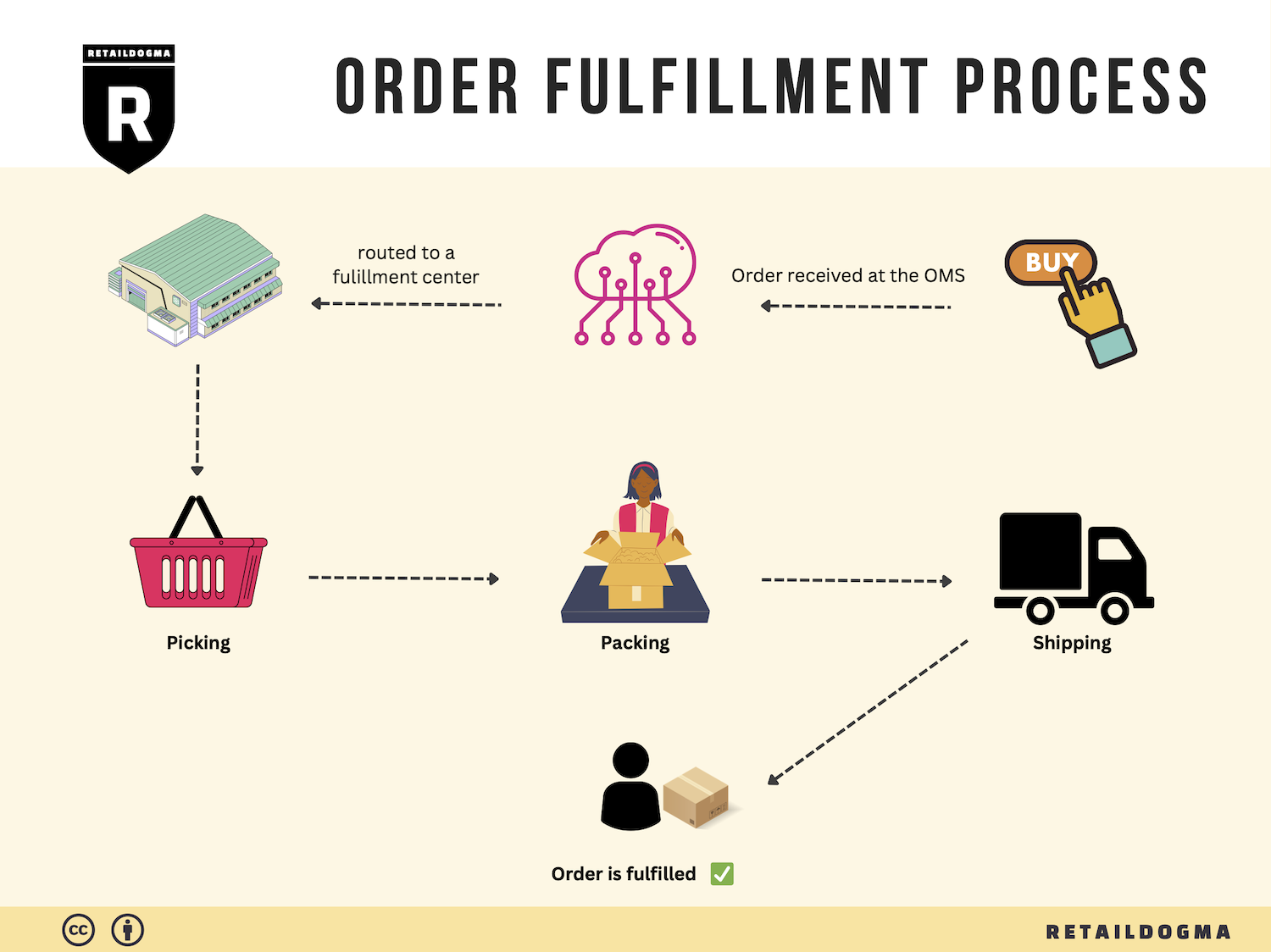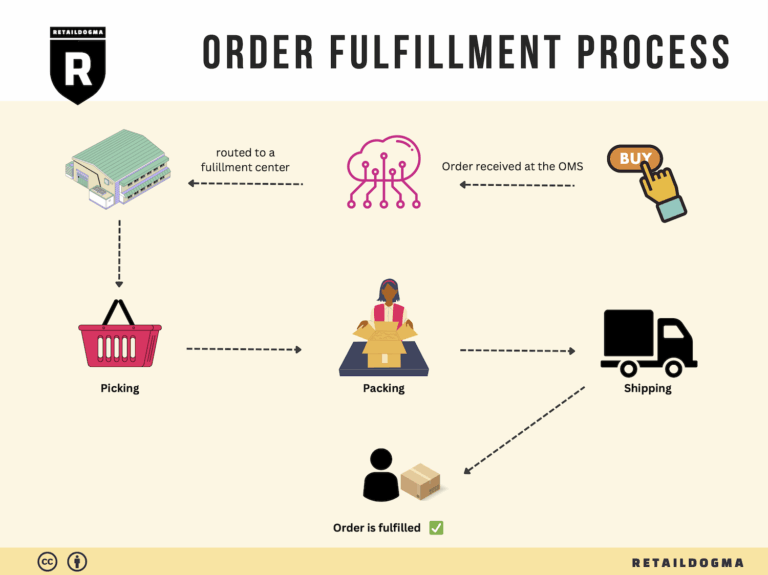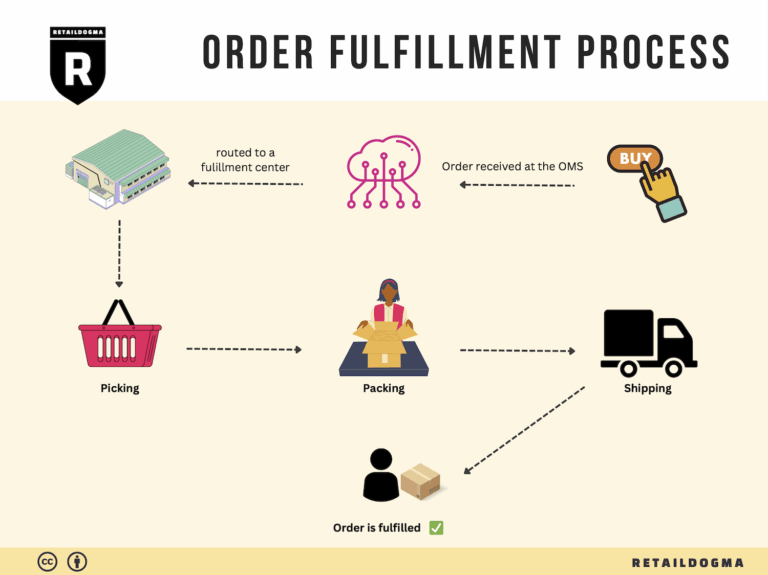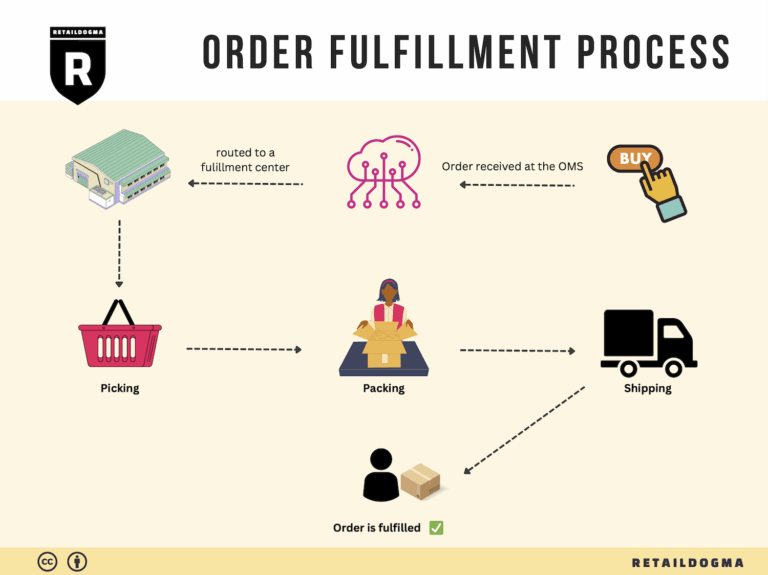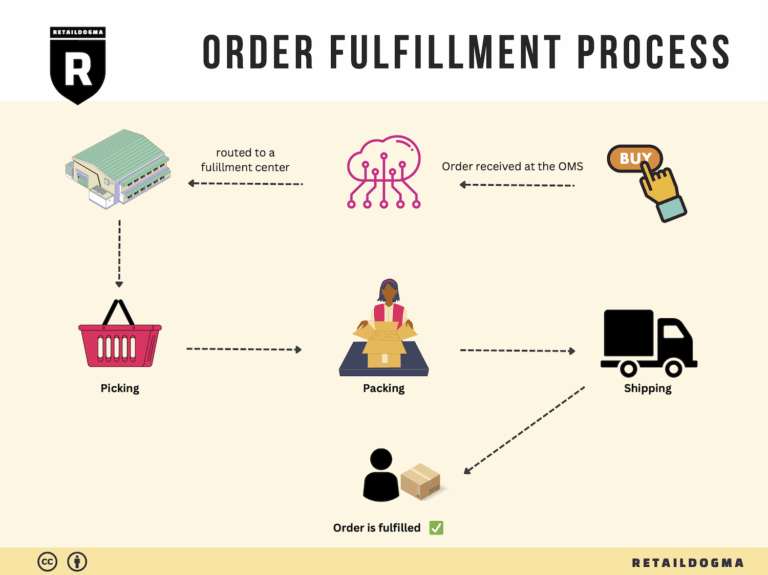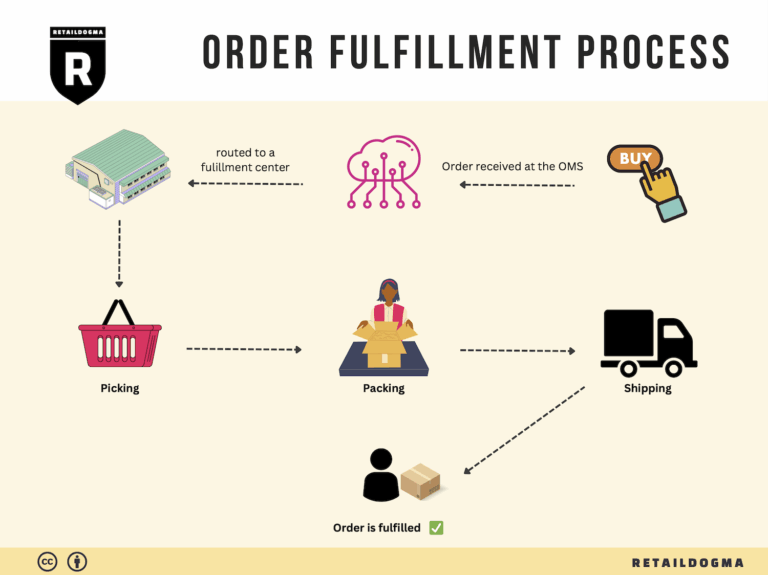Ecommerce Fulfillment Services: The Ultimate Guide (2025)
What is E-commerce Fulfillment? An Introduction for Growing Businesses
Understanding E-commerce Fulfillment: The Key to Streamlined Operations
As an e-commerce business owner, you may find yourself grappling with the complexities of packing and shipping orders. The excitement of growing sales can quickly turn into a daunting challenge as the logistics of fulfilling customer orders become overwhelming. Whether you’re a small startup or a scaling enterprise, the fulfillment process—the act of getting a product from your inventory to your customer’s doorstep—can significantly impact your business’s efficiency and customer satisfaction.
E-commerce fulfillment encompasses several critical components, including inventory management, order processing, packaging, shipping, and returns handling. Understanding these elements is crucial for optimizing your operations and ensuring that your customers receive their orders promptly and accurately.
In this guide, we will explore the various fulfillment models available to growing businesses, such as Third-Party Logistics (3PL) and Fulfillment by Amazon (FBA). Each model offers unique advantages and challenges that can align differently with your business needs. We will also delve into the core services provided by fulfillment partners, including warehousing, order tracking, and customer support.
Selecting the right fulfillment partner is a vital decision that can influence your operational efficiency and overall success. This guide will provide insights on how to evaluate potential partners, considering factors like their technology capabilities, scalability, and service levels. Additionally, we will discuss the pricing structures commonly associated with fulfillment services, helping you understand what to expect in terms of costs and how to budget effectively.
Ultimately, the goal of this guide is to empower you to make informed decisions about your logistics strategy. By understanding the fundamentals of e-commerce fulfillment and the options available to you, you can streamline your operations, enhance customer satisfaction, and set your business on a path to sustainable growth. Whether you choose to handle fulfillment in-house or partner with a specialist, having the right knowledge will enable you to navigate the complexities of e-commerce logistics with confidence.
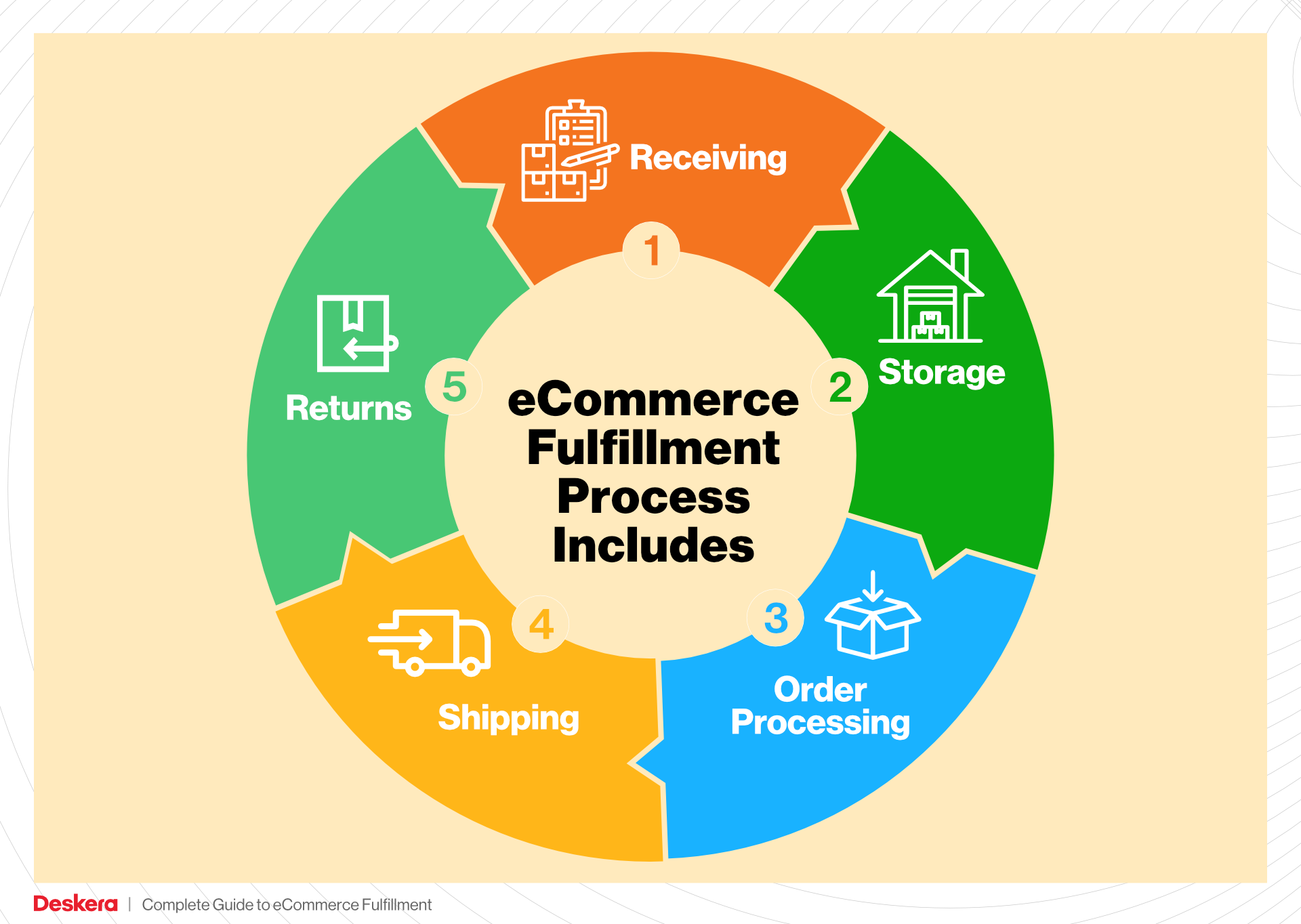
What You’ll Learn In This Guide
- What is E-commerce Fulfillment? An Introduction for Growing Businesses
- The Order Fulfillment Process: From ‘Buy’ Button to Customer’s Door
- Comparing Fulfillment Models: In-House vs. 3PL vs. Dropshipping
- A Deep Dive into Amazon FBA: Pros, Cons, and Who It’s For
- Core Services Offered by Fulfillment Centers
- How to Choose a Fulfillment Partner: A 6-Point Checklist
- Understanding Fulfillment Pricing: A Breakdown of Common Fees
- Frequently Asked Questions (FAQs) about Fulfillment
- Conclusion: Is Outsourcing Fulfillment the Right Move for Your Business?
- Important Disclaimer
The Order Fulfillment Process: From ‘Buy’ Button to Customer’s Door
1. Receiving Inventory
The first step in the order fulfillment process is receiving inventory. This involves the arrival of goods at the fulfillment center, where they are checked against purchase orders to ensure accuracy. Upon arrival, each item is inspected for quality and quantity, and any discrepancies are addressed immediately.
This step is crucial because it establishes the foundation for inventory management and ensures that the fulfillment center has the correct stock to meet customer demands. Key terms associated with this process include SKU (Stock Keeping Unit), which is a unique identifier for each product that helps streamline inventory tracking and management.
2. Warehouse Storage
Once the inventory is received and verified, the next step is warehouse storage. Products are systematically organized in designated locations within the fulfillment center, often categorized by size, type, or sales frequency. Efficient storage solutions, such as shelving systems and automated storage technologies, are utilized to maximize space and improve accessibility.
The importance of this step lies in its impact on overall operational efficiency. Proper storage reduces the time spent searching for items, which can significantly enhance order processing speed. A key term to understand in this stage is bin location, which refers to the specific area in the warehouse where an item is stored, facilitating quick retrieval during the picking process.
3. Order Picking
Order picking is the process of retrieving items from storage to fulfill customer orders. Warehouse associates use various methods for picking, including single order picking, batch picking, and zone picking, depending on the size of the order and the layout of the warehouse. They typically rely on pick lists, which are documents or digital screens that detail the items to be picked and their respective locations.
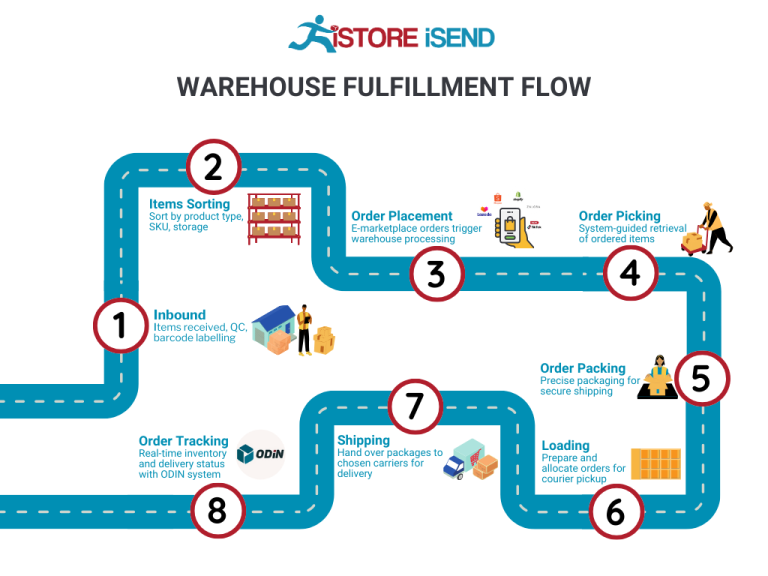
This step is vital because it directly affects the accuracy and speed of order fulfillment. An efficient picking process helps ensure that orders are filled correctly and shipped on time, enhancing customer satisfaction. The term picking accuracy is key here, as it measures the percentage of orders that are picked correctly, which is essential for maintaining inventory integrity and customer trust.
4. Order Packing
Once items are picked, they move to the order packing stage. Here, products are carefully packed into shipping boxes, which are often designed to protect items during transit. Packing materials, such as bubble wrap and packing peanuts, may be used to prevent damage. Additionally, packing slips and invoices are included to provide customers with details about their orders.
The packing process is critical for ensuring that products arrive safely at the customer’s door. Proper packing minimizes the risk of returns due to damaged goods and enhances the overall unboxing experience for customers. A relevant term in this step is packing efficiency, which measures how quickly and effectively items can be packed, impacting overall fulfillment speed.
5. Shipping & Delivery
The final step in the order fulfillment process is shipping and delivery. Once packed, orders are labeled with shipping information and handed off to carriers for delivery. The choice of carrier can affect delivery speed and cost, so businesses often work with multiple logistics partners to optimize their shipping strategies.
This step is crucial as it determines the final customer experience. Timely and accurate delivery can significantly influence customer satisfaction and loyalty. A key term associated with shipping is last-mile delivery, which refers to the final leg of the shipping process, from the distribution center to the customer’s doorstep. Efficient last-mile delivery is essential for maintaining competitive advantage in today’s e-commerce landscape.
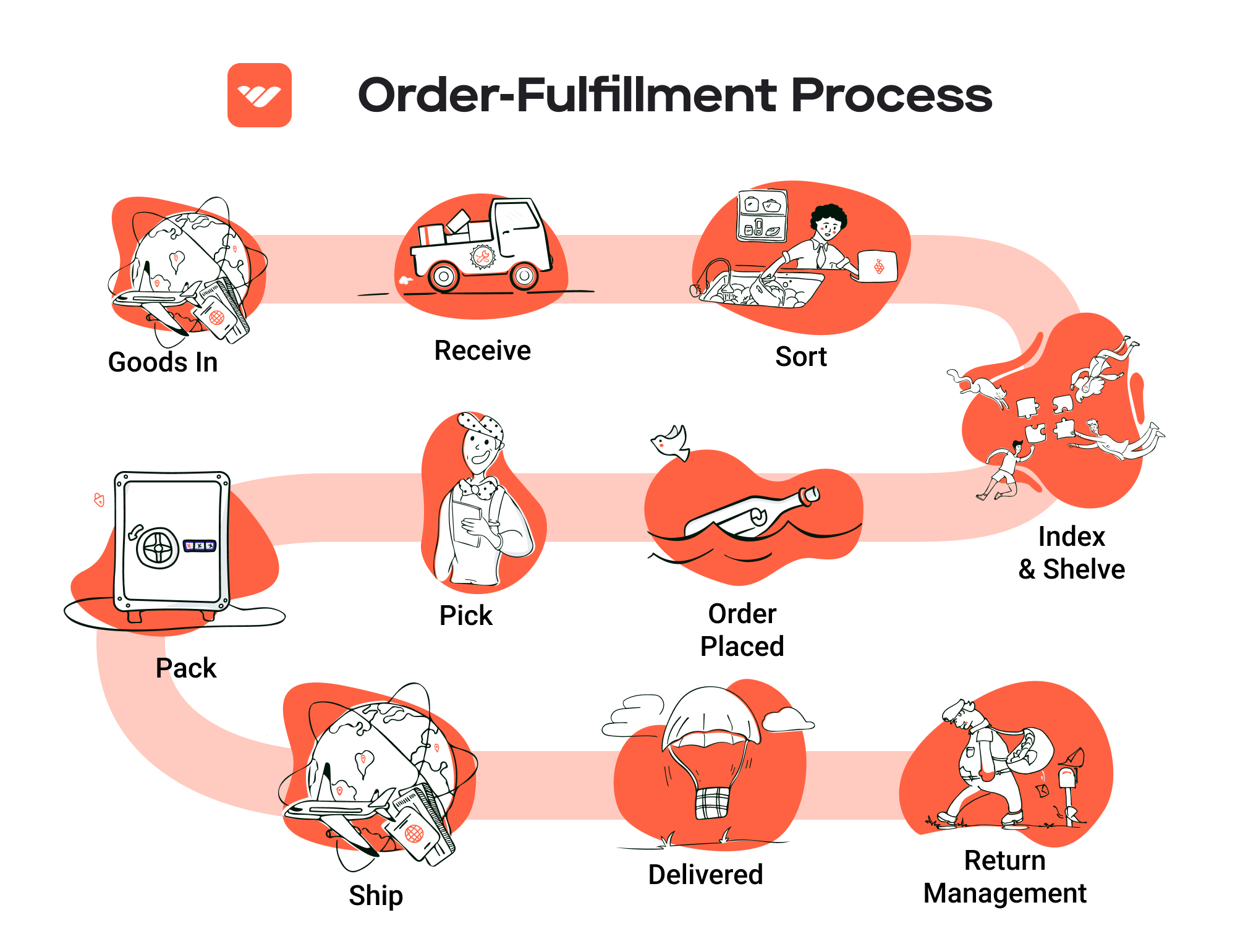
By understanding and optimizing each step of the order fulfillment process, e-commerce businesses can enhance their operational efficiency, reduce costs, and ultimately improve customer satisfaction. This comprehensive approach is vital for scaling operations effectively in a competitive marketplace.
Comparing Fulfillment Models: In-House vs. 3PL vs. Dropshipping
Fulfillment Model Comparison
| Model | Who Handles Inventory | Best For (Business Stage) | Key Advantage | Key Disadvantage |
|---|---|---|---|---|
| In-House Fulfillment | The business itself | Startups and established brands | Full control over inventory and operations | High overhead costs and resource-intensive |
| Third-Party Logistics (3PL) | Third-party provider | Growing businesses | Scalable solutions with reduced overhead | Less control over inventory and fulfillment |
| Dropshipping | Supplier or manufacturer | New or low-capital businesses | Low startup costs and no inventory risk | Lower profit margins and reliance on suppliers |
In-House Fulfillment
In-house fulfillment involves a business managing its own inventory and logistics operations. This model is particularly suitable for startups and established brands that want complete control over their inventory, order processing, and shipping. By handling everything internally, businesses can maintain high standards for quality and customer service, ensuring that orders are processed and shipped according to their specific protocols. This approach is advantageous for companies that have unique products or require customized packaging, as they can tailor the fulfillment process to align with their brand identity.
However, managing in-house fulfillment comes with significant drawbacks. The overhead costs can be high, as businesses need to invest in warehousing, technology, and staffing. This resource-intensive model can strain finances, particularly for startups or small businesses. Additionally, as order volumes increase, scaling operations can become challenging without significant investment in infrastructure and workforce. Therefore, while in-house fulfillment provides a degree of control, it also requires careful management of resources and costs.
Third-Party Logistics (3PL)
Third-party logistics (3PL) is a fulfillment model where businesses outsource their logistics operations to specialized providers. This approach is ideal for growing businesses that want to scale quickly without the burden of managing warehousing and shipping logistics themselves. 3PL companies offer a range of services, including warehousing, inventory management, order fulfillment, and shipping, allowing businesses to focus on core activities such as marketing and product development.
One of the primary advantages of using a 3PL is the scalability it offers. Businesses can easily adjust their logistics operations based on demand fluctuations without incurring the high costs associated with maintaining their own facilities. Additionally, 3PLs often have established networks and relationships with shipping carriers, which can lead to better shipping rates and faster delivery times. However, the downside is that businesses relinquish some control over their inventory and fulfillment processes. This can lead to potential issues such as miscommunication, slower response times, or discrepancies in service quality if the 3PL does not meet the business’s standards.
Dropshipping
Dropshipping is a fulfillment model where a business sells products without holding inventory. Instead, when a customer places an order, the business purchases the item from a third-party supplier, who then ships it directly to the customer. This model is particularly attractive for new or low-capital businesses, as it allows them to start selling without significant upfront investment in inventory.
The key advantage of dropshipping is the low startup cost and the elimination of inventory risk. Entrepreneurs can test various products and markets without the financial burden of purchasing stock upfront. Additionally, dropshipping allows for a wide product range, as businesses can easily add or remove items from their offerings. However, dropshipping also comes with notable disadvantages. Profit margins tend to be lower compared to other fulfillment models, as suppliers often take a significant cut. Moreover, businesses are heavily reliant on their suppliers for inventory management and shipping, which can lead to issues with stock availability, shipping delays, and quality control. This lack of control can affect customer satisfaction and brand reputation if not managed carefully.
In conclusion, each fulfillment model offers distinct advantages and disadvantages that can significantly impact an e-commerce business’s operations and growth. When choosing a fulfillment strategy, it’s crucial for business owners to consider their current stage, financial resources, and long-term goals to ensure they select the model that best aligns with their operational needs and customer expectations.
A Deep Dive into Amazon FBA: Pros, Cons, and Who It’s For
Understanding Fulfillment by Amazon (FBA)
Fulfillment by Amazon (FBA) is a service offered by Amazon that allows sellers to store their products in Amazon’s fulfillment centers. Amazon then takes care of storage, packaging, and shipping of the products directly to the customers. This model enables sellers to leverage Amazon’s vast logistics network and customer base, providing a streamlined solution for e-commerce businesses looking to scale.
When a customer places an order for an FBA product, Amazon handles the entire process—from picking the product off the shelf, packing it, and shipping it to the customer. Additionally, Amazon manages customer service and returns for these orders, allowing sellers to focus on other aspects of their business.
How FBA Works
-
Product Preparation: Sellers prepare their products according to Amazon’s guidelines, which include labeling and packaging requirements.
-
Shipping to Amazon: Sellers then ship their products to Amazon’s fulfillment centers. Depending on the seller’s location and the type of product, Amazon will provide specific shipping plans.
-
Storage: Once received, Amazon stores the products in their warehouses until an order is placed.
-
Order Fulfillment: When a customer orders a product, Amazon picks, packs, and ships it on behalf of the seller. The seller is informed of the sale, and inventory levels are updated in real-time.
-
Customer Service: Amazon handles customer inquiries and returns, providing a seamless experience for buyers.
-
Payment: Sellers receive payments after the product is sold, minus Amazon’s fees.
Pros of Using FBA
1. Prime Eligibility
Products fulfilled through FBA are eligible for Amazon Prime, which can significantly increase sales. Prime members tend to spend more and prefer products with fast, free shipping. Being part of the Prime program can boost visibility and drive traffic to a seller’s listings.
2. Customer Trust
Amazon is a trusted brand, and customers often feel more secure purchasing products fulfilled by Amazon. The assurance of reliable shipping, excellent customer service, and easy returns can enhance a seller’s credibility.
3. Multi-Channel Fulfillment
FBA allows sellers to fulfill orders not just from Amazon but also from other platforms like eBay or their own websites. This flexibility enables sellers to consolidate their inventory and streamline operations across different sales channels.
4. Scalability
FBA provides a scalable solution for growing businesses. Sellers can focus on marketing and product development without worrying about logistics, as Amazon manages the heavy lifting.
5. Automated Processes
With FBA, many operational aspects such as inventory management, order processing, and customer service are automated. This reduces the workload for sellers and allows them to concentrate on strategic growth initiatives.
Cons of Using FBA
1. High Fees
FBA comes with various fees, including storage fees and fulfillment fees. These costs can add up quickly, particularly for sellers with low-margin products or those with slow-moving inventory. Sellers must carefully analyze their profit margins to ensure that FBA remains viable.
2. Strict Inventory Rules
Amazon has stringent inventory management policies. Sellers must adhere to guidelines regarding product preparation, labeling, and storage. Non-compliance can result in additional fees or even penalties, making it essential for sellers to stay informed about Amazon’s requirements.
3. Commingling Risks
FBA utilizes a commingling system where inventory from different sellers is stored together. This can lead to issues if a seller receives returns or damaged goods that are not theirs. This risk of commingling can complicate inventory tracking and quality control.
4. Limited Control Over Shipping
While FBA offers convenience, it also means that sellers relinquish control over shipping methods and times. This can be problematic if sellers want to offer different shipping options or need to manage customer expectations regarding delivery times.
5. Dependency on Amazon
By using FBA, sellers become reliant on Amazon’s platform and policies. Changes in Amazon’s algorithms, policies, or fee structures can directly impact sellers’ businesses. This dependency can be a risk, especially for those who do not diversify their sales channels.
Who is FBA Best For?
Fulfillment by Amazon is particularly beneficial for:
-
Small to Medium-Sized Businesses: Businesses that lack the resources to manage their own logistics can leverage FBA to provide a professional shipping experience without the overhead of maintaining a warehouse.
-
E-commerce Entrepreneurs: Those starting out in e-commerce can take advantage of Amazon’s existing customer base and trust, making it easier to gain traction in a competitive market.
-
Businesses with High Volume Sales: Sellers who have a proven sales volume can benefit from FBA’s efficiencies and customer service, allowing them to scale operations without the burden of logistics.
-
Brands Looking for Increased Visibility: Businesses aiming to enhance their brand exposure can leverage FBA to tap into Amazon Prime customers and improve their product rankings.
In conclusion, while FBA offers a plethora of advantages that can help businesses scale and streamline operations, it also comes with challenges that require careful consideration. By weighing the pros and cons, e-commerce business owners can make informed decisions about whether FBA aligns with their growth strategy and operational capabilities.
Core Services Offered by Fulfillment Centers
Inventory Management & Warehousing
Fulfillment centers provide robust inventory management and warehousing solutions that are crucial for the smooth operation of e-commerce businesses. This service involves the systematic storage, tracking, and management of products within the fulfillment center. Advanced inventory management systems are employed to monitor stock levels in real-time, which helps businesses avoid stockouts and overstock situations.
The benefits of effective inventory management are multifaceted. First, it enhances operational efficiency by ensuring that products are readily available for order fulfillment, which in turn leads to faster shipping times. Second, it provides businesses with valuable insights into inventory turnover rates, enabling better demand forecasting and more informed purchasing decisions. This capability is especially important for e-commerce businesses, where consumer demand can fluctuate significantly. By leveraging these insights, businesses can reduce carrying costs and improve cash flow, ultimately driving higher profitability.
Pick and Pack Services
Pick and pack services are another cornerstone of fulfillment centers. This process involves selecting products from inventory based on incoming orders and packing them for shipment. Fulfillment centers utilize automated systems and trained staff to efficiently execute these tasks, ensuring that the right products are picked, packed, and shipped accurately and promptly.
The main advantage of pick and pack services lies in their ability to streamline order fulfillment. For e-commerce businesses, speed and accuracy are paramount; any errors in order fulfillment can lead to customer dissatisfaction and increased return rates. By outsourcing this function to a fulfillment center, businesses can focus on core activities such as marketing and product development while ensuring that their customers receive the correct orders in a timely manner. Additionally, fulfillment centers often offer various packing options, including branded packaging, which can enhance the customer experience and foster brand loyalty.
Kitting and Assembly
Kitting and assembly services offered by fulfillment centers allow e-commerce businesses to create product bundles or kits that can be marketed as a single item. This can involve assembling multiple products into a single package, adding promotional items, or customizing products according to customer specifications. Fulfillment centers are equipped to handle these processes efficiently, often utilizing specialized equipment and skilled labor.
The benefits of kitting and assembly are significant. For instance, businesses can enhance their product offerings by creating unique bundles that appeal to customers, potentially increasing average order values. Moreover, kitting can simplify the fulfillment process by reducing the number of individual SKUs (stock keeping units) that need to be managed. This not only streamlines inventory management but also optimizes shipping logistics, as multiple items can be shipped together, reducing shipping costs. Overall, kitting and assembly services enable businesses to innovate their product offerings while improving operational efficiency.
Returns Management (Reverse Logistics)
Returns management, often referred to as reverse logistics, is a critical service provided by fulfillment centers. This process involves handling returned products, including their assessment, restocking, or disposal. Effective returns management is vital for maintaining customer satisfaction and loyalty, as a straightforward returns process can significantly enhance the overall customer experience.
The benefits of a well-managed returns process are twofold. First, it allows businesses to recover value from returned products by reintegrating them into inventory or refurbishing them for resale. This recovery can mitigate losses associated with returns, which are an inevitable part of e-commerce. Second, a seamless returns process can improve customer trust and retention. Customers are more likely to shop with a brand that offers a hassle-free return policy, knowing they have the option to return items if they don’t meet expectations.
In summary, fulfillment centers provide essential services that empower e-commerce businesses to scale their operations effectively. By leveraging inventory management, pick and pack services, kitting and assembly, and returns management, businesses can enhance efficiency, improve customer satisfaction, and ultimately drive growth. Embracing these core services is a strategic move for any e-commerce business looking to optimize its logistics and supply chain operations.
How to Choose a Fulfillment Partner: A 6-Point Checklist
Location & Warehouse Network
Importance: The geographical location of your fulfillment partner’s warehouses can significantly impact shipping times and costs. A partner with a well-distributed network can facilitate faster delivery to your customer base, improving satisfaction and reducing shipping expenses.
Questions to Ask:
– Where are your warehouses located, and how does this align with my target market?
– Do you have multiple locations to ensure quick delivery across various regions?
– How do you handle shipping logistics for international orders?
Technology & Integrations
Importance: The technology used by your fulfillment partner can streamline operations, enhance accuracy, and provide real-time inventory visibility. Seamless integration with your e-commerce platform is crucial for efficient order processing.
Questions to Ask:
– What warehouse management system (WMS) do you use, and how does it integrate with my existing systems?
– Can your technology support real-time inventory tracking and reporting?
– Do you offer API access for custom integrations or third-party applications?
Specializations (e.g., Cold Storage, Oversized Items)
Importance: Different businesses have unique needs. If your products require special handling—such as cold storage for perishables or specific handling for oversized items—it’s essential to partner with a fulfillment provider that specializes in these areas.
Questions to Ask:
– What types of products do you specialize in handling?
– Do you have the necessary facilities and equipment for specialized storage (e.g., refrigeration, heavy-duty shelving)?
– Can you accommodate unique packaging or shipping requirements for my products?
Scalability & Capacity
Importance: As your business grows, your fulfillment partner should be able to scale operations accordingly. A partner with adequate capacity can help you avoid stockouts and ensure consistent service as order volumes fluctuate.
Questions to Ask:
– How do you handle peak seasons or sudden spikes in order volume?
– Can your facilities expand or adapt to meet increasing demand?
– What is your current capacity, and how do you plan to manage future growth?
Pricing and Contracts
Importance: Understanding the pricing structure and contract terms is vital for budgeting and financial planning. Hidden fees can eat into profits, so transparency is crucial.
Questions to Ask:
– Can you provide a detailed breakdown of your pricing model, including storage, picking, packing, and shipping fees?
– Are there any additional fees for services like returns processing or special handling?
– What are the terms of the contract, including length, cancellation policies, and any penalties for early termination?
Customer Support & Reviews
Importance: Responsive customer support can make or break your relationship with a fulfillment partner. Quick resolution of issues is essential for maintaining operational efficiency and customer satisfaction.
Questions to Ask:
– What are your customer support hours, and how can I reach your team if issues arise?
– Do you have a dedicated account manager for my business?
– Can you provide references or case studies from other clients, particularly those in my industry?
Conclusion
Choosing the right fulfillment partner is a critical decision that can affect your business’s efficiency, customer satisfaction, and bottom line. By systematically evaluating potential partners using this checklist, you can make an informed choice that aligns with your operational needs and growth objectives. Prioritize these key areas to ensure a successful partnership that scales with your business.
Understanding Fulfillment Pricing: A Breakdown of Common Fees
Initial Setup Fees
Initial setup fees are typically charged by fulfillment centers when you begin using their services. This fee covers the costs associated with creating your account, integrating your e-commerce platform with their system, and setting up your inventory. The amount can vary widely based on the complexity of your integration and the specific requirements of your business.
For example, a straightforward setup for a small business might range from $50 to $200, while larger businesses with extensive inventory management needs could see fees upwards of $500 or more. It’s essential to clarify what services are included in this fee, such as account management or initial training sessions.
Receiving Fees
Receiving fees are incurred when the fulfillment center receives your products and adds them to their inventory. This fee typically covers the labor involved in unloading, inspecting, and storing your goods.
Receiving fees are often calculated per unit or per pallet. For instance, a fulfillment center might charge $0.50 per item received or $25 per pallet. Some centers may also impose minimum fees, meaning that if your shipment is small, you might still pay a flat fee. It’s vital to discuss the specifics of receiving fees with your fulfillment partner, especially if you plan to ship large volumes of inventory.
Storage Fees (per pallet/bin)
Storage fees are charged for the space your inventory occupies within the fulfillment center. These fees can vary based on the size of your items and how they are stored—typically calculated on a monthly basis per pallet or per bin.
For example, storage fees might be $10 to $30 per pallet per month. If your products are smaller or require bin storage, you might pay $1 to $5 per bin per month. Be aware that many fulfillment centers have minimum storage fees, so even if your inventory is small, you may still incur a base fee. This makes it essential to assess your inventory turnover rate to avoid unnecessary storage costs.
Pick & Pack Fees (per item/order)
Pick and pack fees are charged for the labor involved in selecting items from inventory and packaging them for shipment. These fees are usually calculated per item or per order, depending on the fulfillment center’s pricing structure.
For example, you might encounter a fee of $1.00 per item picked or a flat fee of $3.00 to $5.00 per order, regardless of how many items are included. Additional charges may apply for special packaging requirements, such as gift wrapping or including promotional materials. Understanding these fees is crucial, as they can significantly impact your overall fulfillment costs, especially if you offer a wide range of products.
Shipping Fees
Shipping fees are one of the most variable components of fulfillment pricing, as they depend on several factors, including the size and weight of the package, the shipping method selected (standard, expedited, etc.), and the destination. Fulfillment centers often have partnerships with carriers, allowing them to offer discounted shipping rates, which can be beneficial for your business.
Shipping fees can be calculated in different ways, such as flat rates, weight-based pricing, or zone-based pricing. For example, a fulfillment center might charge a flat rate of $5 for domestic shipping up to a certain weight, while heavier packages may incur additional costs based on weight. It’s important to work closely with your fulfillment partner to understand their shipping options and to evaluate the most cost-effective methods for your business.
Tips for Getting an Accurate Quote
-
Understand Your Needs: Before seeking quotes, clearly outline your fulfillment needs, including expected order volumes, types of products, and any special handling requirements. This information will help fulfillment centers provide tailored quotes.
-
Request Detailed Pricing Breakdowns: Ask potential fulfillment partners for detailed pricing structures that specify each fee type. This transparency will help you compare different providers effectively.
-
Inquire About Volume Discounts: Many fulfillment centers offer discounts based on order volumes or long-term contracts. Be sure to ask about potential savings based on your projected growth.
-
Evaluate Hidden Costs: Pay attention to potential hidden fees, such as long-term storage fees or penalties for low inventory turnover. Understanding the full scope of costs will help you avoid surprises.
-
Consider Future Scalability: Choose a fulfillment partner that can grow with your business. Inquire about how pricing structures may change as your order volumes increase.
By following these tips and understanding the common fulfillment pricing models, you can make informed decisions that align with your business goals and help streamline your logistics operations.
Frequently Asked Questions (FAQs) about Fulfillment
1. What can I expect during the Amazon Fulfillment Center tour at FTW6?
During the tour, you will experience a guided walkthrough of the fulfillment center, witnessing how Amazon utilizes advanced robotics and technology to process orders. The tour lasts approximately 60-90 minutes and includes a walking route that may involve navigating stairs and covering about one mile.
2. Is there a dress code for the tour?
Yes, there is a strict dress code to ensure safety. Visitors must wear flat, closed-toed shoes (no sandals, clogs, or high heels), and long pants are recommended. Shirts must have sleeves, and all guests must wear visitor badges provided at check-in.
3. Are there age restrictions for participating in the tour?
Yes, participants must be at least 6 years old. Children under 18 must be accompanied by an adult. For groups of minors, at least one adult is required for every ten children.
4. How do I book a tour at the FTW6 Fulfillment Center?
You can book your tour online through the Amazon Tours website. It’s advisable to reserve your spot in advance, as tours can fill up quickly. Private tours for groups of 10-25 can also be arranged by submitting a request.
5. What items are allowed on the tour?
Guests may bring a wallet, keys, and a transparent water bottle. Cell phones, bags, and other personal belongings should be left at home or in vehicles, as they are not permitted on the tour. If necessary, a secure location will be provided for storing these items.
6. What is the difference between a warehouse and a fulfillment center?
A warehouse is primarily used for storing goods, while a fulfillment center specializes in processing and shipping orders directly to customers. Fulfillment centers are equipped with technology and staff to pick, pack, and ship products efficiently, often using robotics to streamline operations.
7. What is a 3PL, and how does it relate to fulfillment?
A 3PL, or third-party logistics provider, offers outsourced logistics services, including transportation, warehousing, and fulfillment. Businesses often partner with 3PLs to enhance their supply chain efficiency and scale operations without investing heavily in their own logistics infrastructure.
8. How much do fulfillment services typically cost?
Costs for fulfillment services vary based on factors like order volume, storage space, and specific services provided (like packing and shipping). Generally, fees may include per-order fulfillment charges, monthly storage fees, and shipping costs, which can range from a few dollars to significantly more, depending on the complexity of the operation.
9. Can I take photographs during the tour?
Photography is restricted during the tour. Cell phones are not allowed, and still photography is only permitted in designated areas, such as the lobby. Guests are encouraged to leave their devices at home or in a secure location provided by the tour staff.
10. Are the Amazon Fulfillment Centers accessible for individuals with disabilities?
Yes, Amazon Fulfillment Centers are designed to be accessible. If you require specific accommodations, it’s recommended to contact the Amazon Tours Help Center ahead of your visit to ensure your needs can be met during the tour.
Conclusion: Is Outsourcing Fulfillment the Right Move for Your Business?
Evaluating the Benefits of Outsourcing Fulfillment
Outsourcing your fulfillment operations can be a game-changer for your e-commerce business. The primary benefits include significant time savings, enhanced scalability, and access to specialized expertise. By partnering with a fulfillment service, you can redirect your focus from day-to-day logistics to strategic growth initiatives.
Time Savings: Managing inventory, packing, and shipping can consume a substantial portion of your resources. Outsourcing these tasks allows you to streamline operations and free up time to focus on marketing, product development, and customer engagement. This efficiency is crucial, especially during peak seasons when demand surges.
Scalability: As your business grows, so do your logistics needs. Fulfillment partners can easily accommodate increased order volumes without the need for substantial upfront investment in infrastructure or staffing. This flexibility ensures that you can scale operations effectively and efficiently, adapting to changes in demand without compromising service quality.
Expertise: Fulfillment centers bring a wealth of knowledge and technology that many small to medium-sized businesses may lack. They utilize advanced systems for inventory management, order processing, and shipping logistics, ensuring that your operations are not only efficient but also aligned with industry best practices. This expertise can lead to improved customer satisfaction and repeat business, vital elements for long-term growth.
Choosing the Right Partner
However, the benefits of outsourcing fulfillment hinge on selecting the right partner. Not all fulfillment services are created equal, and the wrong choice can lead to delays, errors, and customer dissatisfaction. Conduct thorough due diligence, considering factors such as location, technology, pricing, and customer support.
Next Steps
To determine if outsourcing fulfillment is the right move for your business, consider conducting a comprehensive audit of your current shipping process. Identify bottlenecks, evaluate costs, and assess your capacity to meet future demands. This strategic analysis will guide you in making informed decisions about whether a fulfillment partner could be your next step toward achieving sustainable growth.
Important Disclaimer
⚠️ Important Disclaimer
The information in this guide is for educational purposes. Fulfillment services, pricing, and platform features change frequently. Always conduct your own due diligence and consult with providers directly before making business decisions.
